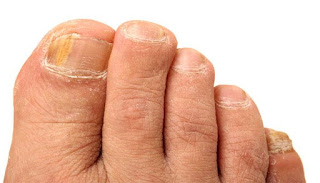Candida auris: (click here) A systematic review and meta‐analysis of current updates on an emerging multidrug‐resistant pathogen
What about steroids? Any effect on the outbreak? The resistance is to anti-fungal medications, what about something that changes the environment, like steroid application or taken orally? If the environment becomes hostile to the fungus it will die.
The fungus, Candida auris, (click here) is known to occur in healthcare settings such as hospitals and nursing homes, CNN reported.
It is a recent problem in the USA, but, this is exactly why the USA must be involved with health issues globally.
Candida auris (click here) is a species of fungus that grows as yeast and is ascomycetous. Ascomycetes are spore shooters, which produce microscopic spores inside special, elongated cells or sacs, known as asci. ... Candida auris has been reported to cause bloodstream infections, wound infections, and otitis (ear infection).
Temperature, aerobic, anaerobic, airborne? The airborne part seems like a non-brainer, but, what triggers it's release of spores. Only spores can contaminate a room that intensely.
Spores (click here) are really durable. The reason it spreads so rapidly is because the spores are plentiful and will cling to anything. Visitors have to wear contamination gear when visiting, IF visiting is an option. Sometimes visiting may be standing outside the window and talking on mobile phones or holding up signs. An isolated patient usually feels reassured if they know others are aware of their plight.
April 6, 2019
By Matt Richtel and Andrew Jacobs
The germ, a fungus called Candida auris, preys on people with weakened immune systems, and it is quietly spreading across the globe. Over the last five years, it has hit a neonatal unit in Venezuela, swept through a hospital in Spain, forced a prestigious British medical center to shut down its intensive care unit, and taken root in India, Pakistan and South Africa.
Recently C. auris reached New York, New Jersey and Illinois, leading the federal Centers for Disease Control and Prevention to add it to a list of germs deemed “urgent threats.”
The man at Mount Sinai died after 90 days in the hospital, but C. auris did not. Tests showed it was everywhere in his room, so invasive that the hospital needed special cleaning equipment and had to rip out some of the ceiling and floor tiles to eradicate it....
There is something triggering the release of the spores as well. The application of heat can also effect spores. If heat works, then how much heat? And heat in what form? Moist will probably encourage the breakdown of the spores and provide for destruction of the material inside. Dry heat might bake the darn things dead. Portable heaters that can obtain prescribed heat to a room might work.
Populations of Bacillus subtilis spores (click here) in which 90 to 99.9% of the spores had been killed by moist heat gave only two fractions on equilibrium density gradient centrifugation: a fraction comprised of less dense spores that had lost their dipicolinic acid (DPA), undergone significant protein denaturation, and were all dead and a fraction with the same higher density as that of unheated spores.
Dipicolinic acid (DPA) increases resistance (click here) Alter the biochemistry and destroy the resistance.
There is something triggering the release of the spores as well. The application of heat can also effect spores. If heat works, then how much heat? And heat in what form? Moist will probably encourage the breakdown of the spores and provide for destruction of the material inside. Dry heat might bake the darn things dead. Portable heaters that can obtain prescribed heat to a room might work.
Populations of Bacillus subtilis spores (click here) in which 90 to 99.9% of the spores had been killed by moist heat gave only two fractions on equilibrium density gradient centrifugation: a fraction comprised of less dense spores that had lost their dipicolinic acid (DPA), undergone significant protein denaturation, and were all dead and a fraction with the same higher density as that of unheated spores.
Dipicolinic acid (DPA) increases resistance (click here) Alter the biochemistry and destroy the resistance.
